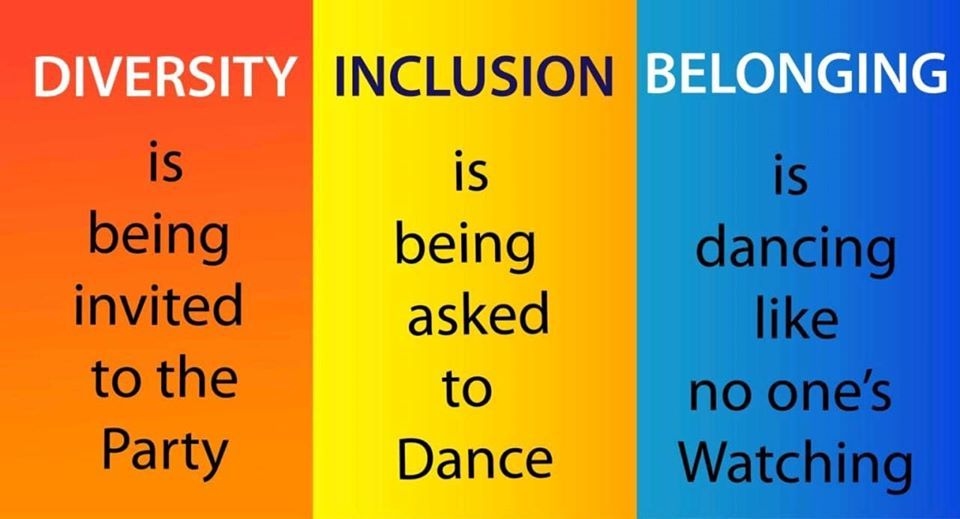Psykisk sundhed og følelsesmæssig støtte på arbejdspladsen har været på HR's dagsorden i de senere år. Mens verden kæmper med kriser, krig og eskalerende globale spændinger, har folk brug for mere støtte end nogensinde før – inklusiv på arbejdspladsen. I denne artikel berører vi nogle af de måder, hvorpå HR og ledelse effektivt kan integrere mentale sundhedsinitiativer på arbejdspladsen. Vi diskuterer også i hvilket omfang HR er ansvarlig for medarbejdernes mentale sundhed, og stiller spørgsmålet: Er mental sundhed egentlig HR's ansvar? På hvilken måde og i hvilket omfang? Hvad kan HR og ledere gøre for at støtte medarbejderne med deres mentale sundhed og følelsesmæssige velvære?
Mental sundhed - hvordan står det til?
Lad os først tage et kig på det generelle begreb “mental sundhed”. Mental sundhed er et ekstremt komplekst emne, i det mental sundhed kan stamme fra vilkårlige livsforhold samt genetik – for ikke at nævne de potentielle virkninger af socioøkonomisk art, kønsidentitet og etnicitet, der sandsynligvis også spiller en rolle for god mental sundhed vi oplever. CDC definerer mental sundhed som følger:
''Psykisk sundhed omfatter vores følelsesmæssige, psykologiske og sociale velvære. Det påvirker, hvordan vi tænker, føler og handler. Det er også med til at bestemme, hvordan vi håndterer stress, forholder os til andre og træffer sunde valg.''
Psykiske tilstande spænder vidt og varierer i forhold til i hvilken grad, de påvirker mennesket i dagligdagen. Almindelige psykiske lidelser i forhold til mental sundhed omfatter bla:
- Angst
- Depression
- Obsessiv-kompulsiv lidelse (OCD)
- Skizofreni
- Posttraumatisk stresslidelse (PTSD)
- Maniodepressiv
- Attention Deficit Hyperactivity Disorder (ADHD)
Psykiske udfordringer findes blandt medarbejdere på tværs af flere sektorer og på forskellige organisatoriske niveauer. I 2021, rapporterede 76 % af medarbejderrespondenterne i en Harvard Business Review-undersøgelse mindst ét symptom på udfordringer inden for en mental sundhedstilstand i det seneste år, hvilket er en stigning på 59 % siden 2019. Det er klart, at mental sundhed altid har været på dagsordenen på arbejdspladsen. Imidlertid har pandemien sammen med flere øgede stressfaktorer i dagens miljø tjent til en yderligere forværring af udfordringerne med mental sundhed på arbejdspladsen. Det er derfor bydende nødvendigt at ledere ser det at fremme mental sundhed på arbejdspladsen som en organisatorisk og strategisk prioritet.
Midt i en igangværende global pandemi, økonomisk volatilitet, krig og øget dagligt pres i det moderne samfund, kommer det ikke som nogen overraskelse, at indrapporteringen af psykiske helbredstilstande er stigende. For eksempel viser en WHO rapport, at i det første år af pandemien steg den globale forekomst af angst og depression med hele 25 %. Ensomhed, sorg, økonomisk usikkerhed og frygt – for infektion, lidelse og død for en selv og for sine kære - er alle blevet nævnt som stressfaktorer forårsaget af pandemien, hvilket kan føre til angst og depression. Den seneste undersøgelse af den globale byrde af sygdom viste desuden, at pandemien har påvirket unge menneskers mentale sundhed negativt, og at de er uforholdsmæssigt udsatte for selvmordsforsøg og selvskadende adfærd. Det indikerer også, at kvinder er blevet mere alvorligt ramt end mænd, og at mennesker med allerede eksisterende fysiske helbredstilstande, såsom astma, kræft og hjertesygdomme, var mere tilbøjelige til at udvikle symptomer på psykisk lidelse.
Ud over pandemien har en anden stor global tragedie også spillet en stor rolle i mange menneskers mentale sundhed - nemlig krigen i Ukraine, som har efterladt de direkte berørte enten ude af stand til at fokusere og levere til samme niveau som før, eller slet ikke i stand til at arbejde. Ukrainske immigranter og andre med familie i Ukraine samt personer med flygtningebaggrund er i størst risiko for at opleve psykiske problemer på arbejdspladsen som følge af krigen.
Selv mennesker, der ikke har været direkte påvirket af krigen, eller ikke har haft nære venner eller familie involveret i krigen, kan også opleve psykiske problemer i form af stedfortrædende traumer - en tilstand, der sker som følge af det bombardementet af centralnervesystemet, der overføres gennem observation, såsom via nyheder og sociale medier. Det massive chok til nervesystemet kan fremkalde intense følelser såsom gråd, overfladisk vejrtrækning eller hyperventilering. Andre almindelige eftervirkninger omfatter søvnbesvær, øget angst, følsomhed over for høje lyde eller dissociation.
Med alt dette i tankerne er det tydeligere nu end nogensinde før, at psykiske lidelser er stigende, og at det helt sikkert påvirker mange mennesker, der går på arbejde - både dem, der selv lider af psykiske problemer, men også deres kolleger. Hvad betyder det, når det kommer til vores daglige arbejdsliv, og hvilket ansvar har ledere, HR og andre, når det kommer til at bygge følelsesmæssigt understøttende arbejdspladser? Dette leder os til vores næste spørgsmål:
Hvem er ansvarlig for medarbejdernes mentale sundhed?
Arbejdspladsen spiller en væsentlig rolle i forhold til positiv mental sundhed blandt medarbejdere. Arbejdspladser med et højere formål, hvor mennesker føler de positivt bidrager til noget større, har et godt kollegafællesskab, og hvor man kan bringe sine styrker i spil, er noget der positivt påvirker medarbejderes trivsel. Men arbejdspladsen kan også være stressende og bidrage til mental ubalance. Ledere og HR har et stort ansvar for at sikre, at arbejdspladsen bidrager positivt, og ikke negativt, i favør for mental sundhed. Her er en måde at anskue ansvaret på:
- HR spiller en afgørende rolle i forhold til at sikre sunde politikker, procedurer og forhold omkring den enkeltes ansættelse. HR's rolle er generelt at støtte mennesker, og derfor bør HR gå forrest med tiltag, der styrker mental sundhed og emotionel støtte på arbejdspladsen.
- Ledere spiller ligeledes en afgørende rolle for folks mentale sundhed på arbejdspladsen. Derfor er ledere centrale aktører i at skabe psykisk sunde arbejdspladser. Ledere bør udvikle en høj grad af følelsesmæssig intelligens (EQ) og være rollemodeller forl sund adfærd. For eksempel bør de gå forrest og forstå behovet for og skabe psykologisk tryghed for medarbejderne. Hvis medarbejderne ikke føler sig trygge, vil de aldrig være i stand til at udføre deres bedste arbejde og det vil påvirke deres mentale sundhed negativt.
Hvordan kan vi opdyrke en mentalt sund arbejdsplads?
Der er stadig et ubestrideligt stigma omkring mental sundhed generelt, for slet ikke at tale om mental sundhed på arbejdspladsen. Pandemien har dog været godt for noget: Det er blevet helt tydeligt hvor vigtigt det er med åbne og støttende samtaler mellem HR, medarbejdere og den øverste ledelse. I pre-pandemi-tiden henviste HR ofte medarbejdere til eksterne ressourcer, hvis der “var noget” med deres mentale sundhed - i stedet for selv at yde direkte støtte. Ofte stod medarbejderne tilbage med en manglende opfølgning og interesse for deres mentale sundhed, og hvis de var blevet henvist til at få eksterne hjælp, blev der sjældent fulgt op på, hvad dette så havde resulteret i. Tingene er dog begyndt at ændre sig til det bedre: HR forventes ikke længere kun at skulle optimere drift og arbejdsgang, de skal også tage ejerskab til at forbedre medarbejdernes mentale sundhed proaktivt. HR skal henvise til tilgængelige ressourcer og finde kreative løsninger for at hjælpe medarbejderne med at klare vanskeligheder, der kan påvirke dem mentalt på arbejde. Omfanget af støtte vil afhænge af organisationens størrelse og økonomiske kapacitet, selvom ikke-finansiel støtte, som f.eks. det at skabe et psykologisk trygt arbejdsmiljø, også er afgørende og ikke nødvendigvis omkostningstungt. Lad os se nærmere på hvordan HR og ledelsen kan styrke mental sundhed på arbejdspladsen:
- Inkluder ansatte fra minoritetsgrupper i beslutningstagningsprocesser. Mental sundhed og diversitet, lighed og inklusion (DEI) er tæt forbundet. Medarbejdere med forskellig baggrund fra majoriteten oplever ofte manglende repræsentation, mikroaggressioner, ubevidste fordomme og andre stressfaktorer, som påvirker deres mentale sundhed og følelse af psykologisk tryghed på arbejdspladsen. Derfor skal HR og ledelse gøre plads til at medarbejdere fra minoriteter får en plads ved bordet og bliver hørt, når der skal træffes beslutninger om arbejdsvilkår, tiltag og indsatser.
- Opdyrk en god feedback-kultur. Investerer tid og energi i at opbygge en kultur med kontinuerlig feedback. En god feedback kultur påvirker både præstationen, engagement og trivsel positivt og kan endda på lang sigt styrke fastholdelsen. Det første skridt er at skabe et arbejdsmiljø, hvor medarbejderne føler sig psykologisk trygge i den feedback, der gives, er konstruktiv og opbyggelig i stedet for straffende og nedbrydende. Ledere skal også passe med ikke helt at undgå at give feedback, det kan i sig selv være skadeligt. Hvis feedback helt undgås, skaber det ikke tryghed, fordi folk så ikke ved, om du fortæller dem sandheden eller ej. Sandhed bygger tillid, og tillid bygger tryghed!
- Dyrk forskellige mentale sundhedstiltag. At være mentalt sund betyder forskellige ting for forskellige mennesker. Derfor bør man ikke låse sig fast på kun en ting til at fremme mental sundhed, men dyrke forskellige tiltag. For eksempel kan HR hjælpe med at skabe et forum hvor det diskuteres, hvad der fungerer bedst for den enkelte medarbejder. I stedet for at organisationen fortæller medarbejderne, hvad de "bør" gøre for deres mentale sundhed, så bør de istedet spørge medarbejderen: ''Hvad kan vi lære af dig og hvad virker for dig?'' En ''one solution fits all'' strategi virker simpelthen ikke.
- Styrk samhørigheden. Mennesker er sociale væsner, så lederne er nødt til at styrke følelsen af forbundethed og samhørighed - selv når teams arbejder sammen på afstand. Selvom teknologien gør det muligt for os at være forbundet online, er det tekniske mindre vigtigt end selve den menneskelige forbindelse. Fokuser på at skabe en dyb menneskelig forbindelse mellem kollegaerne og få folk til at føle, at de virkelig hører til i teamet og organisationen som helhed. Denne illustration af Emily Chang, giver et godt overblik over forskellen mellem at skabe arbejdspladser der er diverse, inkluderende og hvor der er en følelse af samhørighed:

- Normaliser samtaler om mental sundhed. At fjerne stigmatiseringen omkring mental sundhed kræver, at ledere viser sårbarhed og går foran med et godt eksempel, hvilket ikke altid er let. Når ledere er ærlige om deres eget psykiske velbefindende (eller mangel på samme), vil medarbejderne føle sig mere trygge ved også selv at tale om egne udfordringer og oplevelser.
- Frem psykologisk tryghed. Psykologisk tryghed på arbejdspladsen refererer til at medarbejderne tør sige deres mening uden frygt for at blive latterliggjort eller afvist. For at forebygge en psykisk usund arbejdsplads er det ledere og HR-teams ansvar at skabe et psykologisk trygt arbejdsmiljø, hvilket CCOHS beskriver som: "En arbejdsplads, der fremmer medarbejdernes mentale velbefindende og ikke skader medarbejdernes mentale sundhed gennem uagtsom, hensynsløs eller forsætlig måde."
- Prioriter træning i følelseshåndtering. Træning i følelseshåndtering kan være med til at udvikle effektive færdigheder såsom empati, sårbarhed, medfølelse og aktiv lytning. At styrke disse "bløde færdigheder" gør det muligt for medarbejdere og ledere at få bedre kontakt med andre. Ved at investere i at uddanne i følelser hjælper organisationens medarbejderne med at føre svære og vigtige samtaler og skaber et inkluderende, fællesskabsfremmende og trygt arbejdsmiljø.
- Skab plads til tætte kollegiale relationer. Selvom teknologi kan (og velsagtens burde) udnyttes til at optimere mental sundhed på arbejde, skal man ikke underestimere kraften i tætte relationer på arbejdet. Uanset om du er en del af HR, sidder i en lederrolle eller er kollega, så tag fat i dine kolleger og medarbejdere og tjek ind for at se, om de er okay. Ikke alle samtaler behøver at handle om arbejde. Bare det, at vi erkender, at vi lever i mærkelige og stressende tider, og det at du spørger dine kolleger, hvordan de har det, kan gøre hele forskellen.
- Opbyg en proaktiv mental sundheds-kultur på arbejdspladsen -snarere end en reaktiv. I stedet for kun at tage fat på mentale sundhedsproblemer, når de opstår (det vil sige reaktivt), bør en god arbejdsplads lægge vægt på trivsel og fokusere på proaktivt at yde positiv støtte. At skabe et arbejdsmiljø med god følelsesmæssig støtte skal ikke ske som en reaktion på udfordringer, men mere som en forebyggende indsats mod dem.
Udfordringer i forhold til at støtte medarbejdernes trivsel og mentale sundhed
Der kan være mange grunde til, at traditionelle trivsels initiativer måske ikke har været succesfulde på jeres arbejdsplads. Her er nogle bud:
- Mangel på åbenhed: Mental sundhed bliver alt for ofte behandlet som et tabu. Det er historisk blevet stigmatiseret, og denne mangel på åbenhed kan holde medarbejdere, der ønsker at åbne op omkring deres psykiske problemer, tilbage. Frygten for at blive dømt overbeviser dem om at lide i stilhed i stedet for at tale om det.
- Mangel på ekspertise: Rejsen i forhold til at fremme mental sundhed på arbejdspladsen kan være følsom og skal derfor håndteres med den største medfølelse og empati. Mangel på relevant ekspertise på arbejdspladsen til at udvikle og administrere medarbejder-programmer og initiativer til at fremme mental sundhed har forhindret mange virksomheder i at få den ønskede effekt, på trods af indsats og penge investeret.
- Mangel på træning: Ledere er direkte og indirekte ansvarlige for medarbejdernes trivsel. Lederudvikling er nøglen til at hjælpe dem med at forstå deres rolle i at bidrage til et sundt arbejdsmiljø. Med træning og assistance kan ledere hjælpe deres medarbejdere med at være i et sikkert mentalt rum, hvilket vil blive omsat til bedre produktivitet og bedre forretningsresultater – for ikke at tale om gladere medarbejdere.
Måske er den største årsag til, at mental sundhed ikke understøttes på arbejdspladsen, manglende vilje til at forpligte sig fra ledelse. Mange ledere er velbevandrede i forretningspraksisser, men mangler indsigt i den forretningsværdi, som optimering af medarbejdernes mentale sundhed giver. Heldigvis sker der et reelt skifte lige nu, efterhånden som yngre generationer slutter sig til arbejdsstyrken. Der er mindre adskillelse mellem liv og arbejde, og folk bliver mere åbne for at tale om personlige aspekter af deres liv, også når de er på arbejde.
Psykiske udfordringer i start-up-økosystemet
Selvom udbrændthed og psykiske udfordringer kan eksistere i ethvert arbejdsmiljø, er problemet forværret i Startup miljøet. Startup-tilgangen "move fast and break things" (som forhåbentligt snart uddør) har ofte skabt en kultur af overarbejde og udbrændthed, hvilket har ført til skadelige resultater for mange iværksættere og medarbejdere i Startup miljøet. I en helt nystartet virksomhed er man naturligvis bange for at skræmme eventuelle potentielle kunder væk, hvilket desværre ind imellem har ført til manglende åbenhed om udfordringer samt en manglende stillingtagen til mental sundhed.
TechBBQs velværerapport beskriver strukturelle faktorer i start-up økosystemet, der har bidraget til iværksætteres disposition for mentale udfordringer. Angst og høje niveauer af stress, som nystartede stiftere står over for, kan have en dobbelt virkning, der påvirker medarbejdere på alle niveauer i en virksomhed. Det skyldes, at Startups opererer i tempofyldte og pressede miljøer, og at medarbejdere og stiftere kæmper med høje forventninger, stress og højt pres.
Hvis du er nysgerrig efter at lære mere om iværksætteres mentale sundhed, kan du også tjekke en anden artikel udgivet af Sessions administrerende direktør Pernille Brun: Start-up-livet: Sikring af den mentale sundhed hos iværksættere – hvorfor er det vigtigt?
Konklusion
Vi tilbringer det meste af vores vågne tid på arbejde, og grænserne mellem vores arbejde og fritid bliver mere og mere udvandet. Følelsesmæssig støtte og mental sundhed på arbejdspladsen er derfor vigtige emner, der ikke bør overses. I dagens verden præget af usikkerhed og angst er behovet for støtte på arbejdspladsen vigtigere end nogensinde. Både HR og ledere er nødt til at prioritere mental sundhed og kontinuerligt arbejde for at fremme den, fremfor først at gøre noget ved det, når krisen rammer. Vi bør arbejde på at skabe psykologisk trygge arbejdspladser, hvor medarbejderne åbent og trygt kan diskutere deres mentale sundhed. Ved at gøre det skaber vi grundlag for følelsesmæssig støtte i teamet, hvilket giver glade medarbejdere og en sund organisation.












